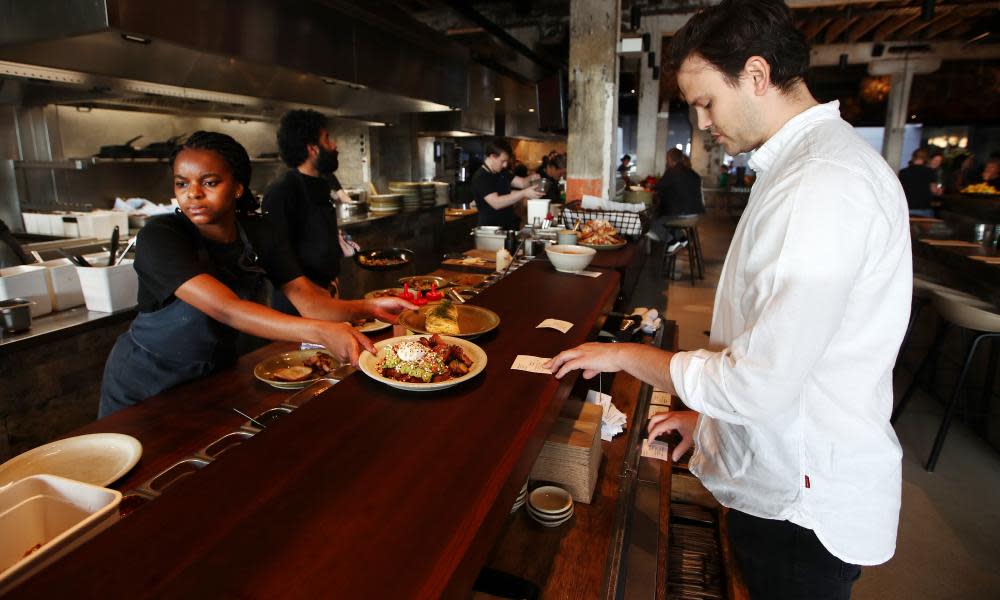New Zealand's 4% unemployment rate masks a deeper Covid hit to the labour market

New Zealand’s unemployment rate has implausibly fallen to 4.0% in the June 2020 quarter, presenting a strong picture of the labour market even as the Covid-19 pandemic takes an axe to the global economy.
You’d be forgiven for thinking that this announcement is a sign of good news. Instead, the release of June’s labour market statistics presented a still-sobering view of the country’s economy.
Households are still hurting, and, despite the low number, more people are out of work and earning less.
Related: 'A matter of when not if': New Zealand begins battle against 'Covid fatigue'
Although the unemployment rate fell, the under-utilisation rate – a broader measure of how much spare capacity the labour market has – rose to 12.0%. Many workers across the economy stayed employed, in large part due to the wage subsidy, but were working fewer hours than they had previously. If there was available work, these staff would have worked for longer. What resulted was the largest quarterly fall in earnings – hitting families in the back pocket.
In fact, the most important number out of the labour market release was the 45,000-person increase in total under-utilised labour, with 346,000 Kiwis either wanting work, wanting more work, or who could be working.
Equally important was the fact that the total number of hours worked fell 10% per annum in June 2020 – the largest decline since records began more than 30 years ago. This figure demonstrates the substantial hit to the economy’s output in the June quarter.
The fact that the official unemployment rate fell in the June quarter doesn’t mean everybody kept their jobs. It’s just that once people lost their jobs, they couldn’t go out looking for a new one – and actively searching for work is a key part of the definition of “unemployed” in a statistical sense.
In other words, the drop in the unemployment rate in June had more to do with whether people could or would look for work, rather than whether or not they had a job. In total, Stats NZ recorded a drop of around 11,000 employed people on average across the June quarter, but the number of people unemployed also declined, by 6,000 people.
The falls in both categories saw a considerable rise in the number of people counted as “Not in the Labour Force”, generally because people who were out of work were essentially unable to look for a new role at lockdown levels three and four. Just as importantly, a considerable number of people would have been discouraged from job hunting, given how hard the jobs market is at present. All of these factors combined to see unemployment drop, but the total number of people disengaged from the labour market rose.
As restrictions started to be lifted, unemployment also started to head higher. Weekly unemployment rates, usually unpublished by Stats NZ, show that after being artificially low during the Level 4 lockdown, the unemployment rate rose to just above 6% at the end of the June quarter. Combined with the higher underutilisation rate, it’s clear that conditions remain tough.
And it hasn’t ended yet. In total, more than 67,000 Kiwis have gone onto an unemployment benefit since 20 March – that’s more in four months than during the entire downturn following the global financial crisis. Around 450,000 workers are also still covered by the wage subsidy extension, which has helped to stem job losses. But with the end of this government support approaching, and the global economic outlook continuing to weaken, all signs are for worse to come for the New Zealand economy.
Still, even once we consider the deeper problems across the labour market, things are still going better than expected in New Zealand. There is no community transmission of Covid-19, people are out and spending, and job losses haven’t been as steep as first feared. That is cause for celebration, but as a country New Zealand must remain cautious. The goal to both keep out Covid-19 and rebuild the economy will be a long, hard journey.
New Zealand isn’t out of the woods yet, and the work to get the economy back on track is only beginning. Don’t kid yourself that things are better yet. Now more than ever, it’s time to plan for the worst, and hope for the best.
Brad Olsen is a senior economist at Infometrics

 Yahoo News
Yahoo News 
